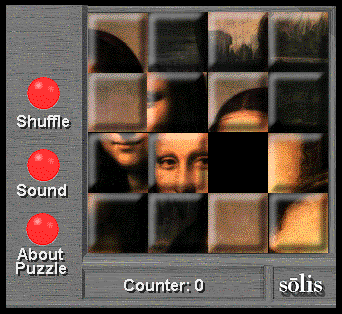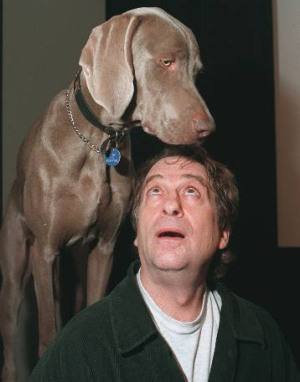The article, "The Cut-Up Method of Brion Gysin," by
William S. Burroughs, made me realize how so many things in our lives are the end results of cut-ups. Patch-works, scrap books, video clips, writings... So many things are indeed fusion of multiple things. What one would wonder then is, when it become your own, your original ideas and works.
 |
"Fountain"-urinal- Ready made
1917
by Marcel Duchamp |
As shown in the powerpoint in class the other day, there are many artworks where an artist would take something found, whether it is an already-existing artwork(s) of others,or everyday objects, and turn it into something else and claim it their own artwork. Take
Marcel Duchamp's works, for example. A toilet urinal. You would find it in any other person's household. Take the urinal and place it in an art gallery and claim it an art work if you are an already known artist. It is no longer a dirtly little toilet pot. It is art. As the
Sunday Times says, there has been quite a number of urinals that were "sculptures" of high expenses just because Duchamp has claimed it as "art". A few of these Duchamp urinals are installed in museums. Some are bought at the auctions with a high-price tags on it. Some were lost and some were stolen. Some were added later into the collection. Isn't it interested how, one day, it is a urinal, and the next day, it is an art work worth 2.5 million dollars? Where is the line that divides one urinal to the special urinal? It wouldn't be the same if a random person took their urinal found in their house and sold it at the gallery or auction. Is it worth that much because it is Duchamp's? Because it was the first bizarre found object that became a famous sculpture? Is it merely the crowd of obsessive collectors that make the urinal so special? Well, urinal is an object. Things get a little more complicated and more-so controversial when an artist starts taking other artist's works and call it their own.
Take Duchamp's other famous work "L.H.O.O.Q."-a mastache added to Mona Lisa-for example. A few pen marks in mockery around the mouth of the world's madonna, Mona Lisa, soon drew people's attention. Duchamp never took the time like
Leonardo Da Vinci to paint that woman. Instead, he put a few pen marks on a great artwork. Is it so great because he did something that nobody would dare do?? Would his work be as influencial if Duchamp cut Mona Lisa in pieces and rearranged it like the shift puzzle shown below, as suggested in The Cut-UP method? Is it really about the mustache, or is it the modification on a great artwork?
|
L.H.O.O.Q.
by Marcel Duchamp |
 |
Mona Lisa Shift Puzzle
|
The question is raised to the next level when the artist whose art was stolen by another artist is still alive. What I mean here is, that Leonardo Da Vinci did not exist when Duchamp took Mona Lisa and mocked it and claimed it his own work. It is a different case for
Richard Prince's series of Cowboy photographs:
Untitled (Cowboy). Prince went ahead and took a series of photos of photos of an American cowboys in Marlboro cigarette ads in a magazine. Prince's beautifully edited photos decided to jump out of the magazine and brought fortune to Prince. Prince did not take the time and money to travel down to Texas to shoot real life cowboys. He did not hire and pay models to be cowboys in the wilderness. He simply took pictures of an already existing photographs. I was very curious in how the original photographer felt about all this, and was able to find a short clip of
Sam Abell, the original photographer of the Marlboro cowboys. It is interesting to see his reactions on Prince's photos of the cowboys. "I'm not angry, of course...I'm not particularly amused...I'm thoughtful about it," says Abell in the interview. Calling him a "cheeky fellow," Abell is very curious in what was going on in Prince's mind when he decided to copy his works and make money out of it. He also states that it is a plagiarism. He talks about the reality of the Art World-how his works will never make that much fortune and will never make it to famous exhibitions and galleries. It's because he is an editorial photographer. Not a famous artist like Prince.
Here again, the question of what "good art" means is brought up. What determines a good art? Is it the newness of the idea? The creative idea that makes it "good"? The movie,
Decasia, by
Bill Morrison is a chain of decaying films of random, once lost footages. By carefully combining them in well-planned order, by having a reoccuring theme (wheels and spins), and by putting it over a carefully composed music by
Michael Gordon to add effects, the 67 minutes films composed of short decayed footages successfully grasped the art world's attention. Who would have thought of such an idea? Fresh and new! Creative!
What is "good art"? Today, borrowing and lending bits and pieces of artwork is inevitable. It just happens due to the accessibility of eachother's artworks. If the artist claims it an art, and if the world buys it, you become famous. If you are not famous already and your artworks get stolen, you just have to live with it. However, I strongly believe that it is problematic if the artist fails to acknowledge the sources of where the original came from and if the source, especially if he/she is still alive, is not happy about it. Then, famous or not, it is a plagiarism.



























